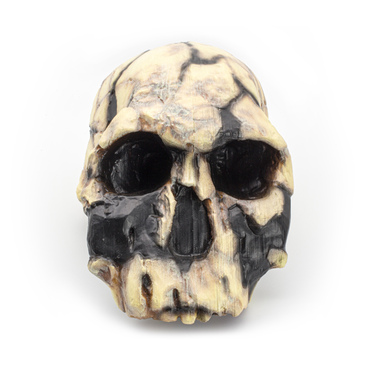The arrowheads were donated to the Irkutsk Museum of Local History funds by Soviet archaeologist and historian Alexey Okladnikov. They were found during an expedition near the Isakovo village in the Bratsky district of the Irkutsk region.
The arrowheads were made of flint and argillite — hard clay rocks. They were attached to a thin rod and used in animal hunting. Researchers attribute the tools to the Neolithic period and assume that they were created 7500-4600 years ago.
The Neolithic era is a special epoch in the history of mankind, during which the way of life for prehistoric people changed. Archaeological sites show this change. People began to use new fabricating materials and create new types of inventories in the Neolithic era. For example, bone harpoons, composite fish hooks, ceramic dishes and a variety of stone arrowheads: leaf-shaped, rhomboidal, triangular, with spikes, with petioles, and without them.
Larger spearheads and bone daggers with flint detailing appeared in the northern regions — they were used to hunt moose or deer. In addition, new techniques for processing of materials emerged: ancient people learned to saw, drill and grind. This helped to improve hunting bow and arrows.
Hunting was the main occupation for ancient humans. In the Neolithic era people began to domesticate animals, including horses and dogs, to hunt and collect food further from home and to transport the prey. In Siberia this happened later than in other regions.
Hunters were also the protagonists of cave paintings — they were depicted with axes, spears and bows in their hands, pursuing wild animals. Often some fictional creatures — patrons of the hunters — were painted nearby.
In the Neolithic era, the things that people used during their lifetime were placed with them when they were buried in a grave. The hunters had axes and adzes made of green jade, bone harpoons, composite fish hooks, scrapers, knives and stone arrowheads. Moreover, archaeologists found stone adzes and axes, jewelry and various miniature figurines in the graves.
The arrowheads were made of flint and argillite — hard clay rocks. They were attached to a thin rod and used in animal hunting. Researchers attribute the tools to the Neolithic period and assume that they were created 7500-4600 years ago.
The Neolithic era is a special epoch in the history of mankind, during which the way of life for prehistoric people changed. Archaeological sites show this change. People began to use new fabricating materials and create new types of inventories in the Neolithic era. For example, bone harpoons, composite fish hooks, ceramic dishes and a variety of stone arrowheads: leaf-shaped, rhomboidal, triangular, with spikes, with petioles, and without them.
Larger spearheads and bone daggers with flint detailing appeared in the northern regions — they were used to hunt moose or deer. In addition, new techniques for processing of materials emerged: ancient people learned to saw, drill and grind. This helped to improve hunting bow and arrows.
Hunting was the main occupation for ancient humans. In the Neolithic era people began to domesticate animals, including horses and dogs, to hunt and collect food further from home and to transport the prey. In Siberia this happened later than in other regions.
Hunters were also the protagonists of cave paintings — they were depicted with axes, spears and bows in their hands, pursuing wild animals. Often some fictional creatures — patrons of the hunters — were painted nearby.
In the Neolithic era, the things that people used during their lifetime were placed with them when they were buried in a grave. The hunters had axes and adzes made of green jade, bone harpoons, composite fish hooks, scrapers, knives and stone arrowheads. Moreover, archaeologists found stone adzes and axes, jewelry and various miniature figurines in the graves.



